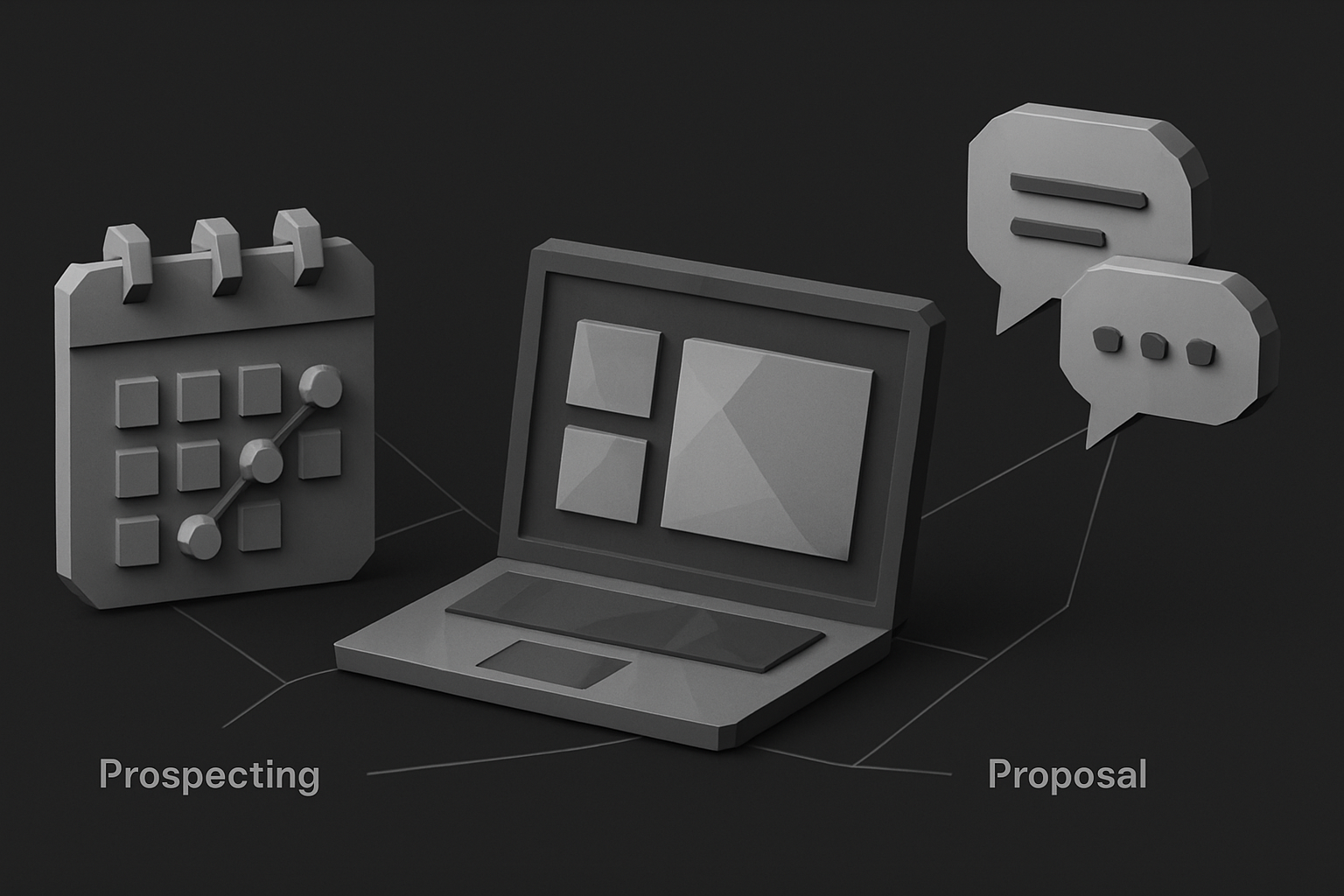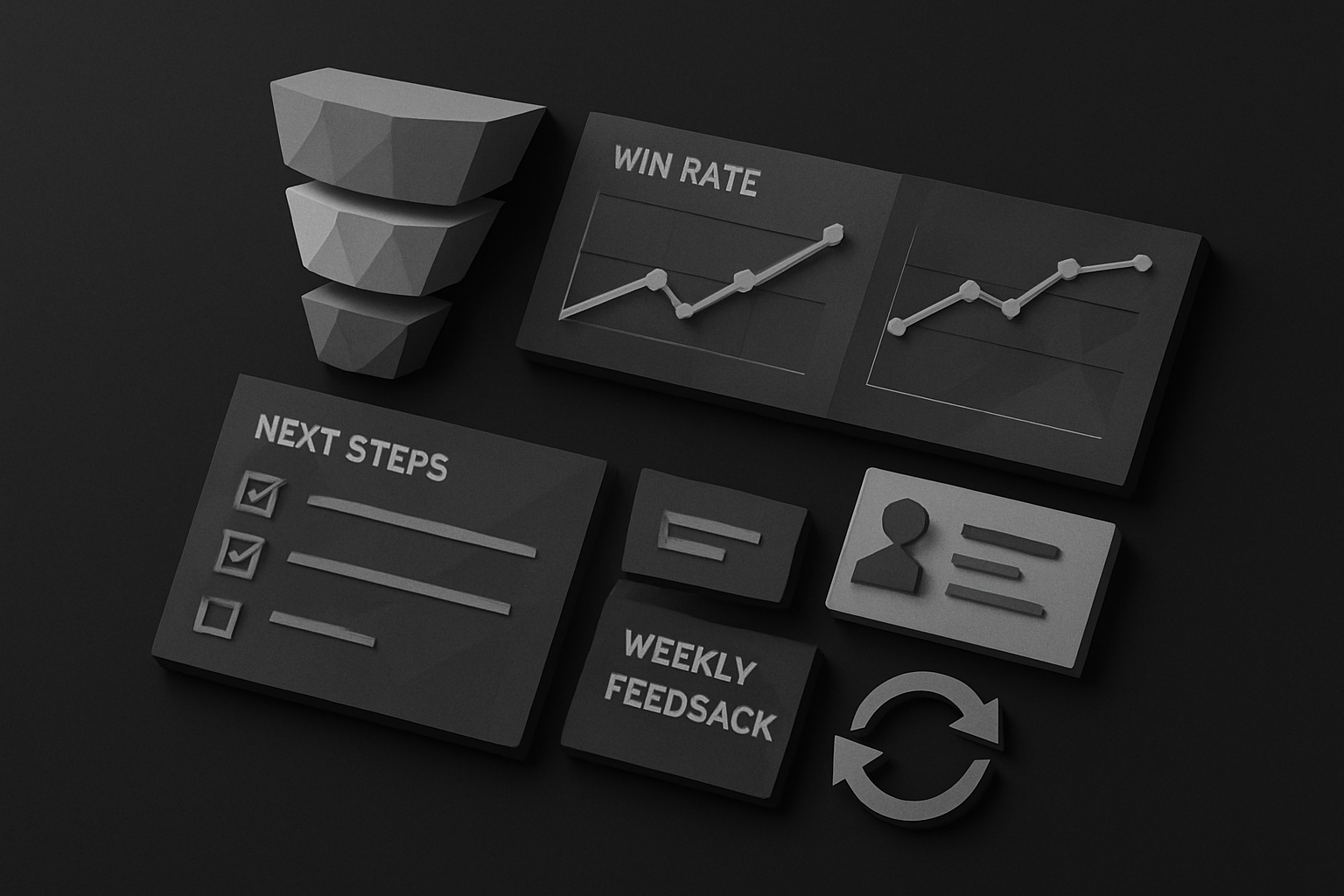Most teams lack a repeatable sales system. In a 2021 Salesforce survey, only 32% of reps reported excellent coaching on core skills. Buyers expect tailored conversations, fast follow up, and low friction checkout.
This guide shows you how to make sales with 11 proven, field tested tips. You’ll learn to sharpen discovery, messaging, demos, objections, pricing, and follow up. Use it as a practical blueprint to apply now.
The thesis is simple: build a consultative motion that maps to your buyer’s journey and removes friction. We’ll preview fundamentals, the tips, daily execution, optimization loops, and industry plays to drive consistency.
What It Really Takes To Make Consistent Sales Today
The way buyers purchase has changed. They research on their own, bounce between channels, and expect a helpful guide rather than a product pitch.
If you are wondering how to make sales consistently, start by adopting a consultative mindset. Lead with curiosity, not features.
Begin every interaction with discovery. Ask about pains, goals, timing, and success criteria before you show anything.
For structure, this overview on Learn how to sell effectively outlines call agendas, questioning, and next steps you can model.
Trust and relevance beat volume. Quality discovery and tailored value propositions will outperform blast campaigns almost every time.
On calls, aim for a 60 to 40 listen to talk ratio. Summarize back what you heard to build alignment and reduce misunderstandings.
Friction kills momentum. In ecommerce, nearly half of abandoned carts cite extra costs like shipping, and in B2B unclear next steps stall deals.
| Friction | Simple fix |
|---|---|
| Pricing confusion | Publish transparent tiers and FAQs |
| Legal delays | Share redline-ready templates early |
Social proof matters. Most buyers read reviews and case studies, so place proof near your CTAs and pricing.
Use short, focused demos. Show only the workflows that solve the top two pains you validated.
End every meeting with mutual next steps and a documented timeline. Confirm owners, dates, and decision criteria.
Want practical math on pipeline? Work backward from stage conversion rates to know how many discoveries, demos, and proposals you need.
Track leading indicators, not just closes. Measure discovery quality, next step adherence, and time to send recap emails.
If you are teaching a team how to make sales at a higher clip, create weekly improvement loops. Review call recordings, update your objection library, and refine templates.
Clarity reduces risk and accelerates yes. Share implementation plans, SLAs, and a lightweight security one pager early.
Language shapes perception. Use positive, empathetic words like simple, supported, and flexible to lower resistance.
To learn how to make sales without pressure, pair data with short customer stories that show before and after. People remember narratives more than stats alone.
Remove buying friction wherever it hides. Offer guest checkout, clear returns, and alternative payments, or in B2B, shorter agreements.
Speed matters after the call too. Follow up fast with a concise recap, assets tailored to persona, and calendar options.
If you are still asking how to make sales in a noisy market, tighten focus on ICP and timing triggers. Right buyer, right message, right moment.
Consistency compounds. Set daily blocks for prospecting, discovery, and follow up, then protect them. Over time you will notice shorter cycles, higher win rates, and a steady pipeline. That is the real engine behind reliable revenue. Keep learning, iterating, and removing friction wherever it appears. Your buyers notice.

11 Proven Tips And Strategies To Make Sales
If you’re wondering how to make sales predictably, start with process over hustle. The following 11 tips are field tested and easy to apply today. Use them to raise win rates, shorten cycles, and simplify buying without guesswork.

1. Tip: Define Your ICP And Ruthlessly Qualify
Clarity beats volume. Document industry, size, core pains, tech stack, and triggers so your team knows how to make sales with focus, not hope. Then qualify quickly to avoid slow no’s and time sinks.
Use a BANT-lite approach that prioritizes pain and timing over formality. Ask why now, who cares, and what decision looks like. If fit is weak, disqualify politely and keep the door open.
| Signal | What to Confirm |
|---|---|
| Pain | Quantified impact |
| Priority | Timeline and urgency |
| People | Decision roles mapped |
| Pay | Budget range alignment |
Target accounts showing triggers like hiring, funding, or stack changes. Build short lists and personalized messages tied to those events. Your pipeline quality will rise as your ICP match tightens.
Score each opportunity against your ICP. High-fit pipeline converts faster, and you’ll know how to make sales without chasing mismatches.
2. Tip: Lead With Discovery And Listen More Than You Talk
Great discovery is your conversion engine. Open with changes since last touch, then dig into goals, risks, and success criteria. Use prompts like walk me through your current workflow and what happens if nothing changes.
Mirror and summarize often. Try so what I’m hearing is followed by specifics to confirm alignment. With consent, record calls and review to improve talk-listen balance and question depth.
Focus on decision process early. Ask who needs to be involved and what milestones matter. Document evaluation criteria in the CRM, then tailor the rest of the journey to hit those points.
Your goal is clarity, not cleverness. When discovery is strong, presenting the solution becomes straightforward, momentum increases, and deals move with less friction.
3. Tip: Sell Outcomes, Not Features
Translate features into concrete business impact. Replace abstract capability talk with so that bridges. Example: automated reminders so that invoices get paid faster and cash flow improves in 30 days. It’s a simple shift that shows you know how to make sales by tying value to results.
Quantify where realistic. Use benchmarks, ranges, or before-after examples. Keep claims crisp and credible. Pair a one-sentence value proposition with a micro-case to anchor proof.
- Reduce pain: fewer errors, lower churn, shorter onboarding.
- Increase gain: higher activation, faster cycle time, larger AOV.
Close the loop with time-bound expectations and clear next steps. Reiterate the outcome in proposals and recaps to maintain focus. Selling impact instead of functionality helps you demonstrate how to make sales with confidence and integrity.
4. Tip: Use Social Proof Strategically
Buyers look for evidence that people like them succeed with you. Match testimonials and case studies by industry, company size, and use case so relevance is obvious. Put quantified outcomes and specific quotes near your CTAs and pricing.
Rotate proof through your cadence. For example, email step three can spotlight how a similar customer achieved a measurable outcome in a short time. Keep it short and link to an exec-friendly one-pager.
For ecommerce, highlight verified reviews and UGC where decisions happen. For B2B, include logo slides plus one short video clip that addresses a common objection.
Make proof easy to find during evaluation. The right story at the right moment reduces risk perception and accelerates decisions.
5. Tip: Personalize Outreach And Presentations
Personalization is context, not flattery. Reference role priorities, recent initiatives, and the prospect’s tools to prove relevance. That’s the practical side of how to make sales without sending more messages than necessary.
Send a brief agenda before meetings. Align on objectives, must-see items, and next steps. During demos, mirror the prospect’s workflow and keep it tight. Cut generic slides and lead with their top three pains.
- Use their language verbatim in your recap.
- Highlight only the features tied to stated goals.
- Show a mini before-after inside the workflow.
Finish by confirming the decision path and timeline. Personalized content boosts meeting acceptance and momentum, which is how to make sales consistently while protecting your calendar.
6. Tip: Leverage Positive, Empathetic Language
Words shape perception. Swap payment for investment and contract for agreement to reduce friction. Emphasize ease, support, and certainty with words like quick, simple, and backed by.
Mirror tone and pace. Avoid jargon and tighten explanations to one or two sentences. Reinforce autonomy with you’re in control and offer clear options rather than pushing a single path.
Validate concerns without minimizing them. Acknowledge the risk, outline mitigation, and show the smallest next step that preserves progress. Confidence without pressure earns trust.
When your language is empathetic and benefit-led, resistance drops and clarity rises. That is how professional sellers create momentum without hard selling.
7. Tip: Handle Objections With Questions First
Treat objections as requests for more clarity. Start with can you tell me more and what specifically worries you. Label the concern to ensure you’re on the right issue. Then isolate it by asking aside from this, is there anything else blocking us.
Offer options that reduce risk. Examples include pilots, phased rollouts, month-to-month starts, or implementation support. Keep stories tight and relevant, showing how similar customers overcame the same hurdle.
Document patterns in an objection library and update your assets to preempt the top three concerns. Track objection frequency by stage and fix the upstream causes when possible.
When you respond with curiosity and structure, you turn blockers into progress. Deals keep moving because buyers feel understood and empowered.
8. Tip: Balance Data With Stories
Stories carry meaning, and numbers validate it. Use a 60 to 90 second narrative that maps problem to outcome, then add one proof metric. This balance is central to how to make sales with both analytical and visionary buyers.
Adapt to persona. Executives often want ROI logic and risk framing. Operators want to see the workflow steps and time saved. Keep visuals crisp and use screenshots sparingly to highlight only the essential moments.
- Framework: from X to Y in Z weeks.
- Persona lens: finance, ops, product, or marketing.
- One metric: pick the most persuasive number.
Close by tying the story back to the buyer’s stated goals. This alignment helps you show how to make sales while creating emotional and rational buy-in.
9. Tip: Always Secure A Micro-Yes And Next Steps
Never end with we’ll think about it. Recap the goals and ask a direct alignment question. If aligned, propose a concrete next step, assign owners, and confirm dates. Send a written summary within 24 hours to keep momentum.
Use this short recap template:
Subject: Recap + next steps
You shared A and B as priorities. We aligned on C as the best path.
Next steps:
- You: D by DATE
- Us: E by DATE
Confirm the decision process includes PERSON and MILESTONE.
Clarify the decision process and required stakeholders to avoid late surprises. If misaligned, ask what would need to be true to move forward and adjust accordingly.
Micro-yes progress keeps your forecast honest and your pipeline predictable.
10. Tip: Make Buying Frictionless
Friction kills conversion. Remove surprise fees, simplify returns, and show pricing clearly. Offer guest checkout, digital wallets, and alternative payments. In B2B, shorten agreements, provide redline-ready docs, and maintain an up-to-date security hub.
Review your purchase flow end to end. Tighten copy, reduce fields, and move trust signals closer to CTAs. If you sell online, learn from this guide on Build high-converting landing pages to structure pages that reduce doubt and accelerate action.
Create a self-serve FAQ and pricing comparables. Preempt common questions to cut email back-and-forth. This discipline is part of how to make sales at higher rates without adding reps or ads.
Fast, clear paths to purchase raise conversion and shorten cycles. Buyers reward the experience that respects their time.
11. Tip: Follow Up And Nurture With Purpose
Follow-up wins deals others abandon. Use multi-channel cadences with value in every touch. Send insights, case snippets, or benchmarks tied to the buyer’s goals. Time outreach to milestones and signals instead of spamming.
Recap calls with bullet-point next steps and confirm dates. Re-engage closed-lost with relevant updates like a new feature or case study. Track reply, meeting, and progression rates to refine your messaging and timing.
Consistency beats intensity. Protect daily blocks for follow-up and pipeline hygiene. That steady cadence is how to make sales week after week, even when net-new leads fluctuate.
Tactical Execution: Prospecting, Demos, And Objection Handling

Prospecting Channels And Cadences That Book Meetings
Prospecting is a weekly rhythm. Mix channels and touch patterns, keep messages short, and lead with relevance.
Aim for 6 to 10 touches over 10 to 14 days, then recycle or nurture. Personalize the opener with a trigger like hiring, funding, or tech changes.
Offer a micro insight or relevant case to earn the conversation. Want actionable playbooks on list building and offers? See the Lead generation strategy guide.
To stay organized, log every touch in your CRM and score replies by quality. If you are learning how to make sales predictably, structure the cadence and measure each step.
- Day 1: email insight plus clear 15 minute CTA
- Day 3: call, voicemail, short text for context
- Day 6: LinkedIn message referencing trigger event
- Day 9: case study email and polite breakup
Keep lists clean. Always.
Run Demos That Convert, Not Impress
Before you show anything, reconfirm pains and success criteria. Adjust your plan to focus only on the workflows that matter. Keep the highlight reel under 10 minutes to respect attention.
If you wonder how to make sales during demos, translate clicks into business impact. Say what happened, why it matters, and by how much. Pair one mini story with a validating metric to make it stick.
Mirror the prospect’s language and pace to build trust fast. Handle small objections in flow using clarify, validate, and isolate.
Close by confirming fit, owners, and dates, then document next steps in writing. For anyone asking how to make sales with multiple stakeholders, share a 90 second clip and a one page summary.
Confidence without pressure wins more than feature tours. End with clear timelines, pricing guardrails, and when you will follow up. Promptly.
Craft Proposals With Pricing Anchors And Options
Frame pricing with anchors to set value, then offer three clear options. Align each option to outcomes and timelines, not just seat counts.
Summarize expected ROI in simple math, and outline an implementation plan by week. Keep agreements short, readable, and redline ready.
Preempt legal and security questions with a documentation hub to reduce delays. Place relevant proof near pricing to reinforce confidence at the moment of decision.
If they hesitate, clarify the objection, isolate it, and offer phased rollout options. Always ask for a micro yes and a date for the next step.
If approval is complex, share a one page checklist and decision map. People seeking how to make sales faster appreciate expiry dates that focus attention.
Follow up in writing within 24 hours with owners and milestones.
Metrics, Tools, And Optimization Loops
What gets measured gets improved, so build a simple sales scoreboard and review it weekly. If you want to know how to make sales consistently, instrument every stage and compare trendlines, not isolated wins.

Track the right leading indicators
Score discovery quality, talk to listen ratio, and next step adherence. Track stage conversions like discovery to demo, demo to proposal, and proposal to closed won, plus cycle days and average deal size.
Tools and review cadence
Use a CRM for pipeline math, call recording for coaching, and a task manager for follow up discipline. For modern automation and social metrics, see Top Modern Sales Strategies for Boosting Your Business Efficiency.
Experiment, learn, and iterate
Run small tests on subject lines, CTAs, pricing anchors, and packaging. Study cohorts by source and persona, then double down on what lifts conversion, win rate, and velocity.
Use a simple experiment log: hypothesis, metric, result, next step. Pricing tests benefit from grounded heuristics like Psychological pricing techniques. Track a compact set in win_rate, cycle_days, avg_deal_size, and next_step_adherence. A lightweight weekly retro ties learning to actions, which is how to make sales more predictable. Share wins and misses in a short loom for team visibility weekly.
Industry-Specific Playbooks And Examples
Learning how to make sales cross industry starts by mirroring each buyer’s decision path.
B2B SaaS: prove activation and retention impact; 10 minute demo; use Consultative Selling: 7 Ways to Win Deals With Consultative Sales for discovery.
Professional services: sell outcomes and method; package scope, add guardrails, and show vertical case stories with timelines and responsibilities.
Ecommerce and DTC: prioritize trust and speed; stack UGC, reviews, and guarantees near CTAs; enable wallets, guest checkout, free shipping thresholds, and returns.
Local services: win the map pack; request Google reviews, publish pricing, offer online scheduling, and send SMS reminders to reduce no shows and cancellations.
High ticket and enterprise: map stakeholders early, propose a pilot, add ROI math and an exec summary, and pre agree legal timelines.
Creators and digital products: lead with audience pains, launch tripwires and bundles, build evergreen email, and place testimonials beside CTAs for proof and frictionless purchase.
If you’re ready to turn these 11 tips into a repeatable system — from sharper discovery to frictionless checkout — let’s take it further.
At CreateSell, we help you productize your expertise and build the automation that keeps sales coming in, even when you’re off. With practical courses, an Ideas Library, and proven playbooks from founder Modest Mitkus, you’ll craft a clear value proposition, stack social proof, and map buyer journeys that convert.
You’ve got the know‑how; we’ll help package and scale it into digital products and evergreen funnels. Ready to move from time-for-money to consistent sales? Get Started.